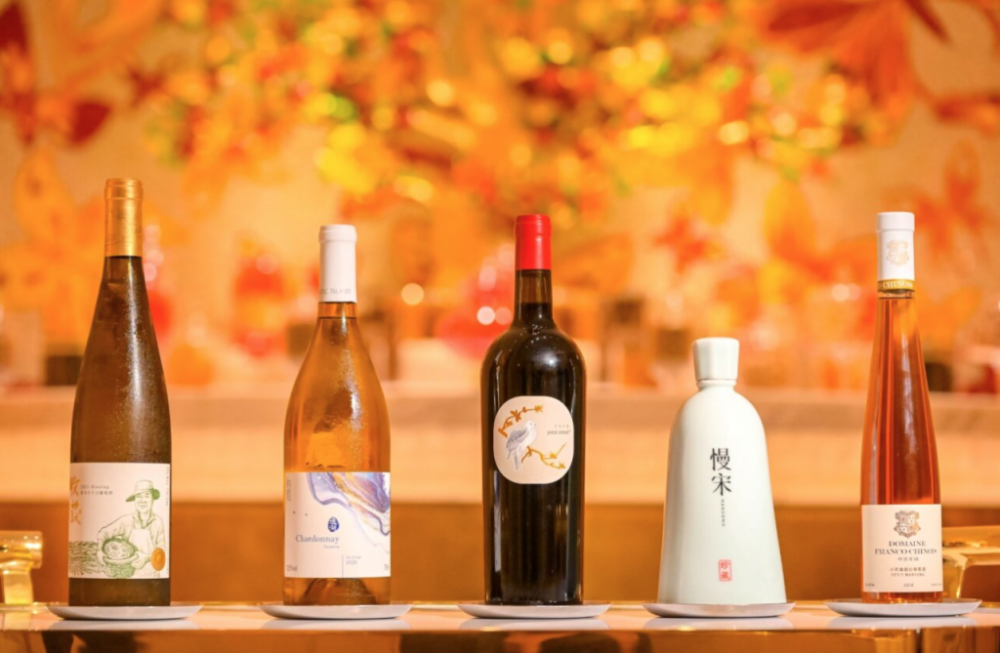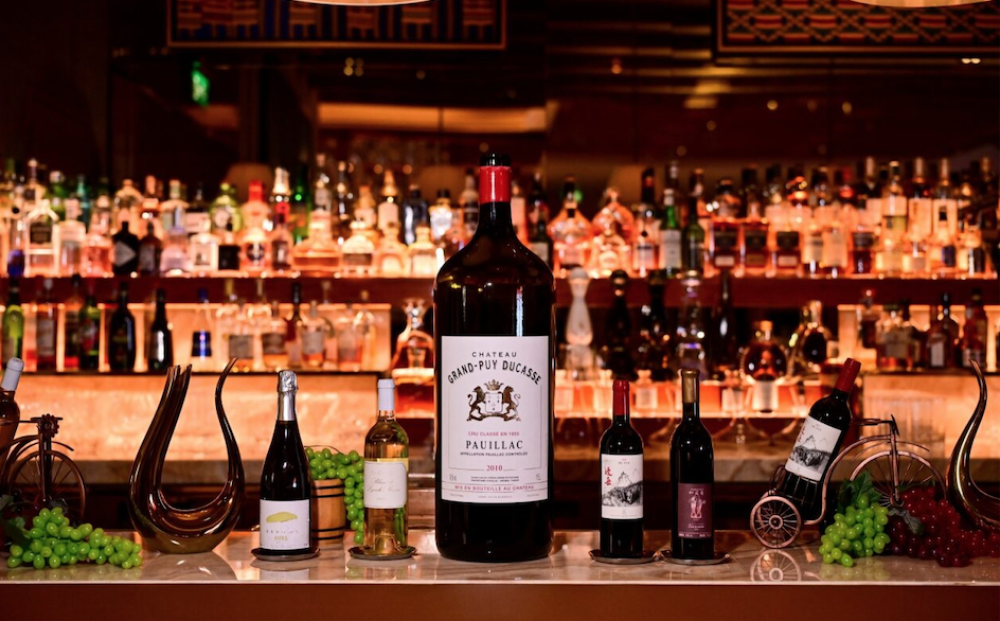Wynn Signature Chinese Wine Awards spotlights challenges in Chinese winemaking
May 02, 2024
Poised to be the biggest wine competition of its kind, the inaugural Wynn Signature Chinese Wine Awards saw 27 judges blind taste wines from 14 regions of China. Inspired by the awards ceremony at Wynn Palace, Stephenie Gee takes a quick dive into the cultural history of wine in China, the challenges of Chinese winemaking and what can be done to promote it

For every Napa Valley, Bordeaux or Tuscany, there’s an equally enchanting, underrated wine region ready to have its moment. Not for lack of quality or appeal, these wine destinations remain lesser known for a myriad of reasons. In Switzerland, because of its high cost of living and limited land, wine – which is arguably the country’s best hidden treasure – is produced in small quantities. By the time locals get their fill, there’s not much left to export. Home to the world’s oldest living vine, Slovenia is one of many unsung wine regions to be found across the Balkans. But it has long been living in the shadows of its neighbouring Italy. Then, closer to home, we have China. The nation’s wine culture is young and nascent, yet it stands today as the world’s largest grape producer with the third-largest vineyard area.
To be clear, winemaking in China is nothing new, dating back to the Han Dynasty (206 BC to 220 AD) when imperial envoy Zhang Qian returned from his travels in the West with vines and winemaking techniques. Still, for much of China’s history, grape wine remained overshadowed by rice wine and traditional spirits like baijiu. The modern surge in interest and production began only in the last century, propelled by economic reforms, global influence and a burgeoning middle class.

“The consuming market is very interesting because actually people forget that from the late Qing dynasty until World War II, there was actually quite a bit of wine drunk in China, particularly in places like Shanghai, Dalian and Yantai,” says wine educator and master of wine Fongyee Walker. “Then World War II happened, then the Cultural Revolution and then after the Communist Party, people were just really concentrating on recovering the country rather than enjoying a glass of wine. So it’s taken China to get rich – it starts from the 1980s and then as people get more and more income and enjoy their life, then they have a space to think, ‘Hey, what else can we do?’ Also remember, in the last 20 years, the Chinese have become big tourists. They go to places like Australia and Europe and they see people enjoying wine and they say, ‘Hey, let’s have a part of that.’ And that’s what’s really driven the wine consumption in China. It’s this ability to spend more money and watching how people outside China live their life.”
Though established over a hundred years ago, it wasn’t until years later that China’s winemaking industry really developed. “And even in the last 30 years, we’ve had a lot of problems sorting out what the grape varieties are, what grapes we can try to do,” Walker says. This all comes down to a lack of international access. “There have been some great programmes. For instance, Ningxia before Covid was running a best winemaker competition for foreign winemakers to try and make a wine that reflected Ningxia and the best of them would be invited back to Ningxia for a vintage to make wine there. Which really is great because you cannot become good at winemaking by only tasting your wines. It’s impossible. How do people become good chefs? They travel the world. They work at different restaurants. They explore. Wine is the same. So you cultivate more good Chinese winemakers by improving international access so they can travel the world to see where the good wines are, to taste good wines. And that’s a huge challenge because some of the winemakers, for instance, the ones that live in small towns in Xinjiang, it’s difficult for them to travel to France or Australia or Argentina. Not just in terms of money, but also it takes them six hours just to get to an airport that flies to these countries.”
Also see: Asia’s Best Female Chef 2024 on heritage, innovation, and female talent
Asia’s Best Sommelier 2023 Della Tang is one to agree. “When you talk about winemaking, you always need to talk about the people behind it. And now, we’re starting to see that they have a better understanding of what good wine or fine wine is. And I think it’s because the younger generation of winemakers, they have more international experience and they’ve had more contact with fine wines from other countries. That I think really contributes to the improved winemaking techniques and earning more international recognition.”
Spanning the equivalent of five time zones and bordering 14 countries by land, China is home to some 700 to 800 wineries today. Arguably the most famous wine region in the country, Ningxia specialises in Bordeaux varieties like Cabernet Sauvignon and Merlot. Yantai, in Shangdong, is the largest, producing over 40% of the country’s wine. About 2,000m above sea level in Shangri-La, Yunnan, sits one of the highest vineyards in the world: Ao Yun, backed by LVMH. “There are never regions that are better than others. Everywhere in the world has the potential to produce great wine. There’s easier. Easier is correct. But there’s also nowhere in China that’s really easy,” Walker tells me. “China is a difficult place to grow wine grapes and each region has a different challenge. If you want a rich red, warm style of wine, then I think in Xinjiang it’s probably a bit easier to produce that style of wine. If you want an elegant, very lifted perfume-style of wine, I think Shangri-La is quite easy, or Shandong. If you want a classic Cabernet style of wine, Ningxia is a good choice.”

Chinese wines can be ludicrously expensive. In part, because of China’s cold, dry winters, which mean grapes have to be put through a laborious burial process. Burying, generally, by the end of November and unearthing in spring allows grapes to come to fruition where they may have otherwise withered. At the same time, it adds to the cost of maintaining vines, requires workers with special training and a portion of the yield is sacrificed each year. “It’s kind of like pulling a blanket over the grapes to help them hibernate in the winter. And this is a very, very difficult process,” Walker explains. “It can add up to one-third more of the costs of taking care of the grapes, because you have to push the grapevines close to the ground. Then you have to take the earth and you have to put the soil around the vines. Then you have to let the vines sleep under the ground until March or April. Then you have to take a shovel or a machine and dig them up. Then you need to pull the vines back up onto your frame, onto your trellis, onto your wires. It’s quite a lot of work to do this.”
This and land ownership are the two major constraints. “No land in China can be owned outright. It all belongs to the government,” Walker says. “You cannot own a vineyard for a thousand years, which is what you can do in, say, Australia. If you can own a vineyard for 200, 300 years, and it goes to your family, you can really begin to do long-term investment. In China, 30 years is the usual. And 30 years is hardly long enough for the grapes to become old vines. So that’s a huge problem. How do you invest in it? How do you develop it when the whole system of agricultural land ownership is set up to kind of fight against that?”

On the international stage, Chinese wines are still considered very much a novelty. I ask how that can be changed. “As a wine professional,” Tang says, “wine from different regions all need their certain space in the market. For sure, French, Italian, Australian wine, these are the very famous regions and they have built up their reputation over years. But there have always been niche or up-and- coming wines that are often recommended by sommeliers and are loved by wine consumers. So I think that’s one approach. To recommend Chinese wines as something niche and up-and-coming for consumers. And the other thing is to convince them with quality. I recently brought a bottle of Chinese wines to share with some international sommeliers. We did a blind taste and they were amazed by the quality. That’s another good way – by letting them just taste it without telling them what the wine is so they don’t have any prejudice towards it.”
The answer, for Walker, lies in restaurants. Not just any restaurant, but high-quality, fine-dining establishments. “There’s not a lot of reasons for international people to buy Chinese wine and one of the biggest reasons, I think, is that we don’t have outside of China very expensive Chinese restaurants to feature Chinese wine. Because that’s the biggest way to promote wine – with food. Italian restaurants went from being pizza places to 8 1/2 Otto e Mezzo Bombana and Michelin-starred restaurants in the last 30 years. And that has helped Italian wine develop to a very high level. The same with Spanish wine. There are more and more really nice Spanish restaurants. While Chinese restaurants in the West are still stuck in takeaway or Panda Express. And people don’t eat it with wine.”
Also see: #legendeats: Black Sheep Restaurants, Rosewood Hong Kong, Mother’s Day dining and more





























